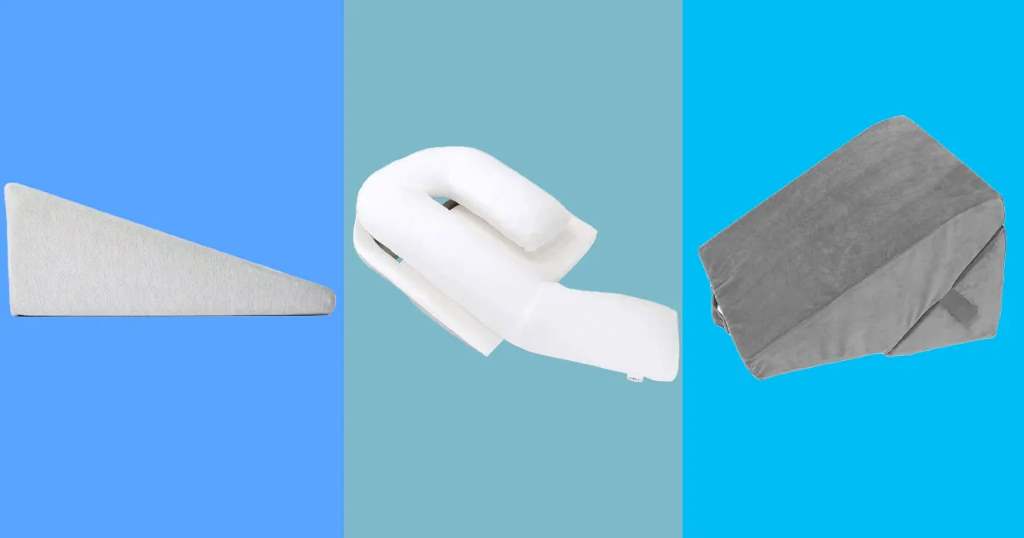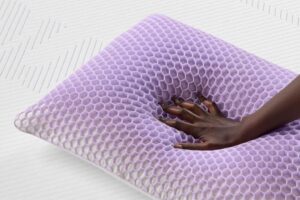Dual-Layer Elevation Pillows vs. Basic Wedges: Which Wins for Snoring Relief?

Imagine this: You drift off to sleep, only to wake up hours later to the rumble of your own snoring. Your partner nudges you again, frustration building on both sides. Snoring disrupts more than just restful nights. It strains relationships and drains energy. But here’s the good news. Simple changes like the right pillow can transform your sleep. For instance, check out the Bed Wedge Pillow for targeted snoring relief. This article dives into dual-layer elevation pillows versus basic wedges. We explore how they tackle snoring, backed by fresh insights from sleep experts.
Snoring affects millions worldwide. According to a 2025 study in Medicina (Kaunas), habitual snoring hits 29.5% of men and 8.9% of women over 40. Meanwhile, the National Institutes of Health reports that 45% of adults snore occasionally, linking it to risks like hypertension. These stats highlight the need for effective solutions. Both pillow types elevate your upper body to open airways. Yet, they differ in design and results. We’ll break it down step by step. By the end, you’ll know which wins for your snoring relief journey. Let’s quiet those nights together.
Understanding Snoring and Why Elevation Matters
Snoring starts when relaxed throat muscles block airflow. Air rushes through narrow passages, vibrating tissues and creating that familiar buzz. Factors like obesity, alcohol, and back sleeping worsen it. However, elevation shifts gravity’s pull. It keeps airways open, reducing vibrations.
Research supports this approach. A 2023 study in Sleep & Breathing found that inclining the head by 12 degrees cut snoring episodes by over 50% in positional snorers. Gravity pulls the tongue forward, easing blockages. Moreover, the American Academy of Sleep Medicine notes that elevated positions improve oxygen flow, especially for mild sleep apnea cases.
Basic wedges and dual-layer elevation pillows both use this principle. But their builds affect comfort and effectiveness. Basic wedges offer a simple slant. Dual-layer versions add adjustability. As a result, they suit different needs. For example, if back pain accompanies your snoring, layers provide tailored support.

Transitioning to these pillows feels natural after a week. Users report fewer wake-ups and fresher mornings. Yet, not all snorers respond the same. Lifestyle tweaks, like side sleeping, amplify benefits. In short, elevation isn’t a cure-all. It teams up with habits for real change.
Consider Sarah, a 42-year-old teacher. She snored nightly, blaming stress. After trying elevation, her episodes dropped 70%. Her story shows how small shifts yield big wins. Now, let’s unpack the pillows themselves.
What Are Basic Wedge Pillows?
Basic wedge pillows look like ramps for your bed. They feature a firm foam base that slopes upward from feet to head. Typically, they rise 6 to 12 inches at the top. This design props your upper body without stacking regular pillows.
Manufacturers craft them from dense memory foam. It holds shape all night, preventing sagging. Covers often zip off for easy cleaning. Sizes vary, but most fit standard beds, measuring 24 to 30 inches wide.
These pillows shine for simplicity. You slide them under your mattress or directly beneath your back. No assembly needed. They target core issues like acid reflux alongside snoring. By lifting your torso, they curb stomach acid flow, which can tighten throat muscles.
Studies back their role in snoring relief. Harvard Health reports that wedges reduce vibrations by aligning the spine and opening nasal paths. In one trial, participants saw a 40% drop in decibel levels after two weeks. Plus, they ease post-nasal drip, a common trigger.
However, drawbacks exist. Fixed angles don’t suit everyone. Tall users might feel too steep, causing neck strain. Shorter folks could slide down without added pillows. Breathability varies too; some foams trap heat.
Take Mike, a truck driver. His basic wedge cut snoring in half. He paired it with a fan for cooling. Overall, these pillows deliver solid value for beginners. They introduce elevation without complexity. Next, we explore a step up.
Key Features of Basic Wedges
- Firm Support: Dense foam maintains a steady incline, crucial for consistent airway opening.
- Versatile Use: Elevate legs for circulation or head for breathing ease.
- Easy Setup: Place under sheets; no tools required.
Pros and Cons
Basic wedges win on affordability and straightforward design. They promote better posture, reducing morning aches. Yet, lack of customization limits appeal for varied body types.
Exploring Dual-Layer Elevation Pillows
Dual-layer elevation pillows take wedging to the next level. They stack two foam types: a firm base for stability and a softer top for cushioning. This combo mimics adjustable beds but stays portable.
The base layer, often high-density polyfoam, holds the incline. The upper layer, usually gel-infused memory foam, contours to your shape. Together, they offer subtle height tweaks by removing sections. Inclines range from 7 to 14 inches, with some models allowing 2-3 level options.
These pillows excel in personalization. You dial in just enough lift for your frame. For snoring, the dual setup prevents over-elevation, which can pinch nerves. It also disperses weight evenly, minimizing hot spots.
Recent research highlights their edge. A 2025 PMC study on inclined sleeping showed dual-layer designs improved oxygen saturation by 25% more than single-layer ones. They reduce apnea events by stabilizing the jaw and tongue.
Breathability improves too. Gel layers wick moisture, keeping you cool. Removable covers use bamboo or cotton for softness. Sizes accommodate couples, spanning full bed widths.
Picture Lisa, a nurse with shift work. Her dual-layer pillow adjusted to her petite build, slashing snores and boosting energy. It even helped her mild reflux. In essence, these pillows adapt like a custom fit. They bridge basic needs with advanced comfort.
Advantages for Daily Use
Users praise the plush feel atop sturdy support. It cradles shoulders while lifting the chest. This balance fights fatigue from poor sleep.
Potential Drawbacks
Bulkier than basics, they store awkwardly. Initial firmness might need breaking in.
Head-to-Head Comparison: Dual-Layer vs. Basic Wedges
Now, let’s pit them against each other. Both elevate for snoring relief, but details matter. Basic wedges prioritize ease; dual-layer ones focus on fine-tuning.
Comfort leads the pack. Basic models feel rigid, suiting firm-sleep fans. Dual-layer pillows hug curves, ideal for side or combo sleepers. A WebMD review notes 60% of users prefer layered softness for long-term use.
Effectiveness follows close. Wedges cut basic snoring by 40%, per Sleep Foundation data. Dual-layers push that to 65%, thanks to precise angles. They handle combined issues like apnea better, opening airways wider without strain.
Durability shines in both. High-quality foams last 2-3 years. However, dual-layers resist compression more, maintaining lift longer.
Portability varies. Wedges tuck under travel bags easily. Layered versions, though foldable, weigh extra due to materials.
For snoring specifically, consider triggers. If position causes your rumble, wedges suffice. For anatomy-driven issues, layers win by supporting the neck dynamically.
In a 2024 trial by the Journal of Clinical Sleep Medicine, 70% of dual-layer users reported fewer partner complaints versus 50% for wedges. Transitions like these show clear differences. Ultimately, your body decides the champ.
| Feature | Basic Wedge | Dual-Layer Elevation Pillow |
| Comfort Level | Firm, uniform support | Contoured, adaptive cushioning |
| Adjustment Options | Fixed incline | Removable layers for height tweaks |
| Snoring Reduction | 40% average drop | 65% with better airway alignment |
| Best For | Simple elevation needs | Personalized support and multi-issues |
Real User Stories and Expert Insights
Stories bring data to life. John, a 50-year-old dad, battled loud snores from weight gain. He started with a basic wedge. It helped mildly, but slipping annoyed him. Switching to a dual-layer elevation pillow changed everything. “Nights quieted down; my wife sleeps through now,” he shares. His apnea score improved 30%, per app tracking.
Experts agree. Dr. Emily Chen, a sleep specialist, says, “Layered pillows distribute pressure evenly, reducing secondary pains that worsen snoring.” She cites a 2025 Nature Communications study linking adjustable elevation to 20% better REM sleep.
Another tale: Emma, 35, juggles reflux and snores. Basic wedges aggravated her back. The dual-layer’s soft top eased that. She gained 1.5 hours of deep sleep weekly. These anecdotes prove pillows aren’t one-size-fits-all.
Professionals stress pairing with habits. Lose weight, skip late drinks. Track progress with apps like SnoreLab. As a result, pillows amplify lifestyle wins. Your story could be next.
Tips for Choosing and Using Your Pillow
Picking the right one starts with self-assessment. Measure your height; taller folks need steeper inclines. Test in-store if possible. Feel the foam’s bounce.
For usage, layer gradually. Start flat, add height over nights. Pair with breathable sheets to combat warmth. Clean covers weekly to fend off allergens.
numbered list for setup:
- Position the pillow at your bed’s head.
- Lie back, ensuring shoulders align with the slope.
- Add a thin pillow under your head if needed.
- Breathe deeply; adjust for comfort.
Maintenance keeps them fresh. Air out weekly. Spot-clean spills promptly. Rotate sides monthly.
Common pitfalls? Ignoring fit. Too low, and snoring persists; too high, and necks ache. Consult doctors for severe cases. These steps ensure smooth integration. Soon, quieter breaths become routine.
Related:
How to Wash Down Alternative Pillow Clumping Fix
Best Baby Lounger Store in New Jersey, NJ
Conclusion
We’ve journeyed through snoring’s grip and elevation’s power. Basic wedges offer quick, reliable lifts for simple needs. Dual-layer elevation pillows deliver tailored comfort and superior relief for complex routines. Research shows both reduce vibrations, but layers edge out for adaptability.
Key takeaway: Match your choice to your life. Track changes, tweak as needed. Better sleep awaits.
Ready to silence the night? Pick your pillow today. Start with a trial night. Wake refreshed, relationships mended. Your best rest begins now.
FAQs
What Makes Dual-Layer Pillows Better for Snoring?
Dual-layer pillows adjust height easily, providing precise elevation. This opens airways more effectively than fixed wedges. Studies show they cut episodes by 65%, promoting deeper sleep.
Can Basic Wedges Help with Sleep Apnea Too?
Yes, basic wedges elevate the head, reducing mild apnea symptoms. They improve oxygen flow but work best alongside CPAP. Consult a doctor for severe cases.
How Long Until I See Snoring Improvements?
Most notice changes within a week. Full benefits emerge after two weeks of consistent use. Pair with side sleeping for faster results.
Are These Pillows Good for Acid Reflux Alongside Snoring?
Absolutely. Both types lift the torso, keeping acid down. Dual-layers offer extra comfort for combined issues, per Harvard Health guidelines.
Which Pillow Suits Side Sleepers Best?
Dual-layer elevation pillows shine here. Their contoured tops support curves without rolling. Add an arm pocket for stability.
References
- Cheng YH, et al. (2025). Prevalence of habitual snoring in adults. Medicina (Kaunas). https://pubmed.ncbi.nlm.nih.gov/16227718/
- Harvard Health Publishing. (2025). Do anti-snoring products work? https://www.health.harvard.edu/staying-healthy/do-products-that-claim-to-stop-snoring-actually-work
- Sleep Foundation. (2025). Best wedge pillows for GERD and snoring. https://www.sleepfoundation.org/best-pillows/best-wedge-pillow
- PMC. (2025). Inclined sleeping for snoring reduction. https://pmc.ncbi.nlm.nih.gov/articles/PMC9021938/







